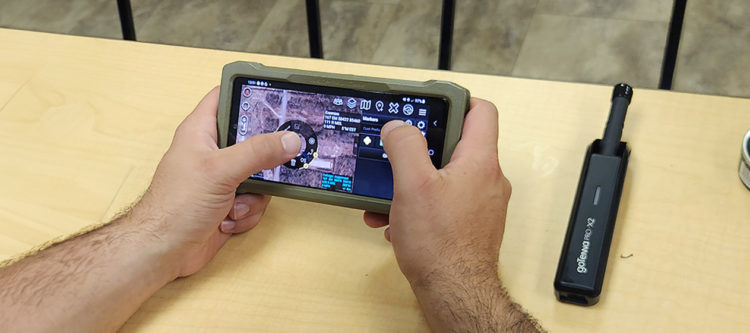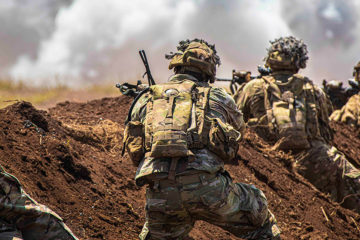Building better training scenarios and after-action reports

Training is a part of life for many individuals who perform the nation’s most essential national security and defense jobs. Whether they’re called drills, exercises, or any other name, training events are critical for ensuring everyone knows what to do and how to respond when emergencies arise. In some other cases, these events are used to test our nation’s defenses – identifying weaknesses and locating areas where security could be increased and defenses hardened.
However, military and law enforcement personnel face some challenges both during and after training events. Many of these challenges result directly from trying to design and execute training programs that are as effective as possible.
A common phrase across military and law enforcement training and readiness circles says, “Train like you fight, and fight like you train.” That phrase is a core principle of the U.S. Army originally attributed to General George Patton.
The concept behind this principle is relatively straightforward – training exercises should be as realistic as possible to replicate the scenarios, conditions, and experiences that operators might face in the field. Operators should also take training exercises seriously and put in their full effort to ensure they’re prepared for the real thing. This is the only true way to ensure that operators are ready for the unpredictable nature of defense, law enforcement, and national security missions.
However, the desire to “train like you fight” often results in training operations and exercises that can be somewhat chaotic – much like the real-world scenarios that they’re designed to simulate. The chaotic nature makes it difficult for those overseeing the exercises to know precisely what is happening. It can also make it difficult to remember exactly what went right or wrong during training.
However, the goTenna team recently had the opportunity to engage in some training exercises that involved using our body-worn mobile mesh networking radios and EdgeRelay devices, and we found that the introduction of mobile mesh networking can deliver three massive benefits for training and evaluation missions.
Better insight into the action
As discussed, simulated military and law enforcement operations can be chaotic. Operators will often be deployed with full tactical gear, including body armor, and are subjected to realistic scenarios and environments designed to reflect what they’ll face in the real world. In some environments, simulated weapons – such as the multiple integrated laser engagement system (MILES) – may be deployed to enable simulated firefights safely.
“LACK OF OFF-GRID SITUATIONAL AWARENESS COMMUNICATIONS CAN BE PARTICULARLY PROBLEMATIC FOR SAFTEY PERSONNEL IN POTENTIALLY DANGEROUS EXERCISES, WHICH MIGHT FIND IT DIFFICULT TO IDENTIFY INDIVIDUALS NEEDING ASSISTANCE AND GET THEM TO CARE IN A TIMELY FASHION.” –LUKE STEWART
In these environments, tracking exactly what is happening during the exercise can be difficult. Senior leaders, safety personnel, and other individuals in command and operations centers may find it challenging to identify the movements of individuals and rapidly identify what actions are being taken. Lack of off-grid situational awareness communications can be particularly problematic for safety personnel in potentially dangerous exercises, which might find it difficult to identify individuals needing assistance and get them to care in a timely fashion.
However, much of the guesswork can be eliminated simply by introducing mobile mesh networking devices to the exercise. These devices build an ad hoc communications network between all participants and enable operators to see each other’s locations in near real-time.
At a recent training exercise that we attended, the goTenna team was able to project a display in the command and control center detailing all of the participants’ locations and movements. That display could be updated with notes and pins detailing events and activities that happened during the exercise. This enabled the safety and command personnel in the room to see what was happening as it was happening instead of having to rely on voice communications over a traditional radio and hand-written notes in a notebook.
The ability to see the exercise as it happened and place pins and notes on a map was also incredibly useful for another reason.
More accurate, thorough after-action reports
Ultimately, these types of training events are educational opportunities. They’re a chance to train operators on what to do during missions and a chance to identify shortcomings and weaknesses. Part of that education happens during the exercise, but much of it happens in classrooms and meeting rooms after the exercise is over – and between sessions.
“SHOWING THE EXACT LOCATION OF OPERATORS, DROPPING PINS INDICATING AREAS OR ACTIVITIES OF INTEREST, TIME-STAMPING CRITICAL EVENTS, AND SEEING ALL TEXT COMMUNICATIONS OCCURING THROUGHOUT THE EXERCISE CAN PROVIDE LEADERS WITH FAR MORE, HIGHER-QUALITY INSTRUCTIONAL TOOLS THAT THEY CAN USE IN THE CLASSROOM.” –LUKE STEWART
The quality of the education that can happen in the classroom is directly related to the quality of the intelligence end users gather during the exercise. If the learnings from the training are a few notebooks of hand-scribbled notes or the memory of fatigued participants, the value of the time in the classroom will be limited. However, showing the exact location of operators, dropping pins indicating areas or activities of interest, time-stamping critical events, and seeing all text communications occurring throughout the exercise can provide leaders with far more, higher-quality instructional tools that they can use in the classroom.
This is precisely the capability that goTenna has provided during these recent training exercises – the ability to better track movements and decisions and create more accurate after-action reports. Operating on a mobile mesh network maximizes the value that military and law enforcement organizations receive from their training exercises – giving them valuable tools that they can use to train today and into the future.
However, there was something even more fundamental that mobile mesh can deliver to training environments.
Basic communications, regardless of the environment
As we’ve discussed, operators need to train like they fight. That means training in the same conditions in which missions will be held.
For U.S. Coast Guard agents, that may mean boarding and searching a ship at sea, which can act like a giant Faraday cage – keeping agents inside from communicating with those outside. For the U.S. military, that may mean training in austere, off-grid locations with no cellular or mobile communications or networks to connect them. For DEA and Border Patrol, that could mean operating in the harsh, remote locations along the U.S. southern border – where infrastructure doesn’t exist, and help can be hours away.
“TRAINING EXERCISES ARE ESSENTIAL FOR ENSURING THE SAFTEY AND SECURITY OF OUR NATION AND FOR ENSURING OPERATORS KNOW WHAT TO DO WHEN THE MISSION CALLS.” –LUKE STEWART
In the training exercises that the goTenna team participated in, we created a massive ad hoc mobile mesh network that kept all participants connected, regardless of the distance and environment that divided them. This is why goTenna provides critical communications for events like the Tough Stump Rodeo, where goTenna solutions provide positional situational awareness for Tough Stump team members and as a tool for intra-team messaging in austere conditions.
Training exercises are essential for ensuring the safety and security of our nation and for ensuring operators know what to do when the mission calls. Mobile mesh networking solutions can keep training exercises collaborative, connected, and easily observed. They can also help maximize the value of training sessions by making after-action reporting more accurate – improving the quality of educational opportunities back in the classroom.







No Comment